实验7:基于REST API的SDN北向应用实践
实验7:基于REST API的SDN北向应用实践
一、实验目的
1.能够编写程序调用OpenDaylight REST API实现特定网络功能;
2.能够编写程序调用Ryu REST API实现特定网络功能。
二、实验环境
1.下载虚拟机软件Oracle VisualBox或VMware;
2.在虚拟机中安装Ubuntu 20.04 Desktop amd64,并完整安装Mininet、OpenDaylight(Carbon版本)、Postman和Ryu;
三、实验要求
(一)基本要求
1.OpenDaylight
(1) 利用Mininet平台搭建下图所示网络拓扑,并连接OpenDaylight;
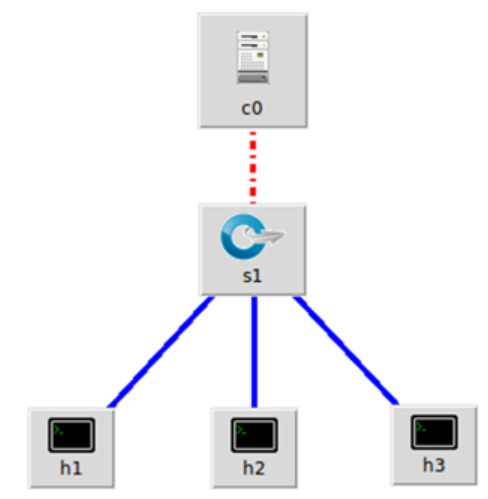
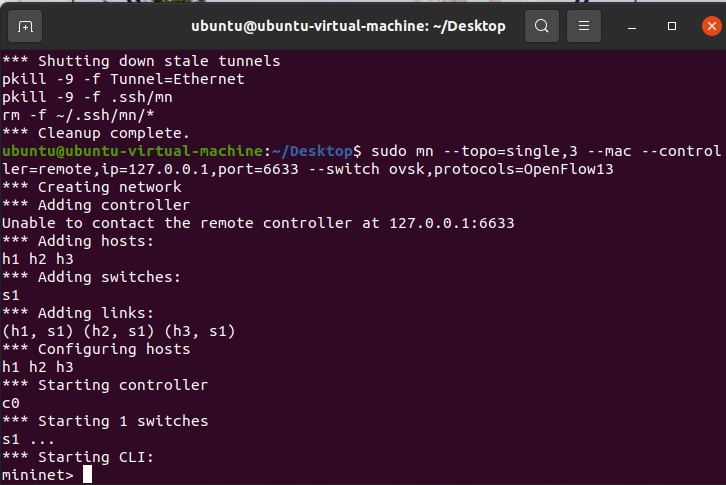
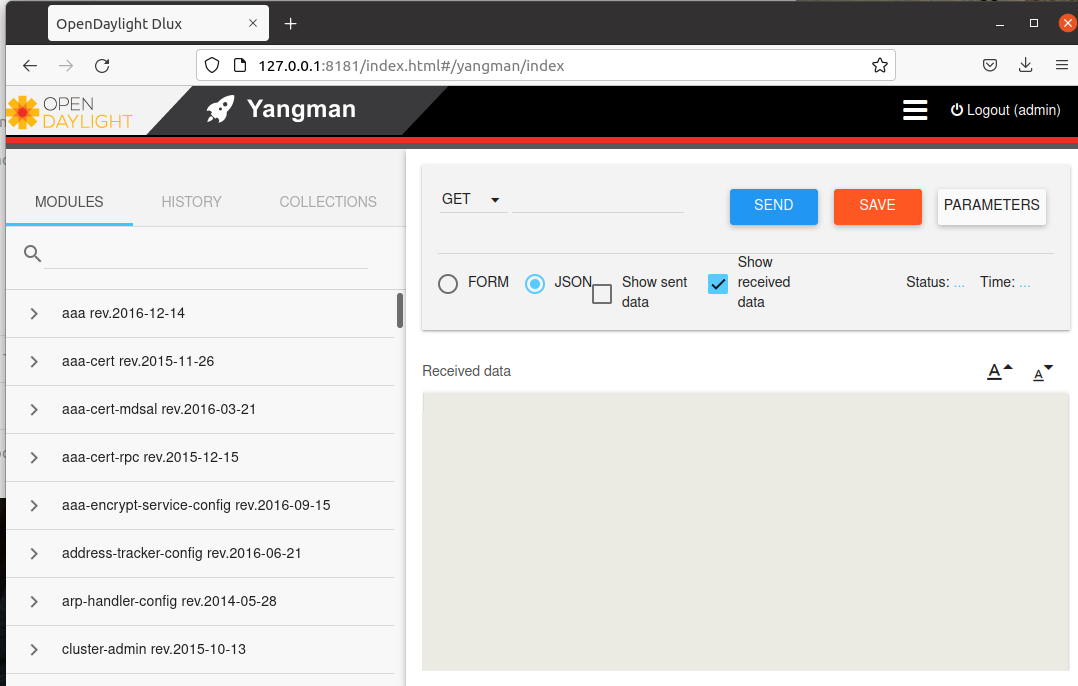
(2) 编写Python程序,调用OpenDaylight的北向接口下发指令删除s1上的流表数据。
#!/usr/bin/python
import requests
from requests.auth import HTTPBasicAuth
def http_delete(url):
url= url
headers = {'Content-Type':'application/json'}
resp = requests.delete(url,headers=headers,auth=HTTPBasicAuth('admin', 'admin'))
return resp
if __name__ == "__main__":
url='http://127.0.0.1:8181/restconf/config/opendaylight-inventory:nodes/node/openflow:1/'
resp = http_delete(url)
print (resp.content)
(3) 编写Python程序,调用OpenDaylight的北向接口下发硬超时流表,实现拓扑内主机h1和h3网络中断20s。
#!/usr/bin/python
import requests
from requests.auth import HTTPBasicAuth
def http_put(url,jstr):
url= url
headers = {'Content-Type':'application/json'}
resp = requests.put(url,jstr,headers=headers,auth=HTTPBasicAuth('admin', 'admin'))
return resp
if __name__ == "__main__":
url='http://127.0.0.1:8181/restconf/config/opendaylight-inventory:nodes/node/openflow:1/flow-node-inventory:table/0/flow/1'
with open('h_timeout.json') as f:
jstr = f.read()
resp = http_put(url,jstr)
print (resp.content)
{
"flow": [
{
"id": "1",
"match": {
"in-port": "1",
"ethernet-match": {
"ethernet-type": {
"type": "0x0800"
}
},
"ipv4-destination": "10.0.0.3/32"
},
"instructions": {
"instruction": [
{
"order": "0",
"apply-actions": {
"action": [
{
"order": "0",
"drop-action": {}
}
]
}
}
]
},
"flow-name": "flow1",
"priority": "65535",
"hard-timeout": "20",
"cookie": "2",
"table_id": "0"
}
]
}
(4) 编写Python程序,调用OpenDaylight的北向接口获取s1上活动的流表数。
#!/usr/bin/python
import requests
import json
from requests.auth import HTTPBasicAuth
def http_get(url):
url= url
headers = {'Content-Type':'application/json'}
resp = requests.get(url,headers=headers,auth=HTTPBasicAuth('admin','admin'))
return resp
if __name__ == "__main__":
url='http://127.0.0.1:8181/restconf/config/opendaylight-inventory:nodes/node/openflow:1/flow-node-inventory:table/0'
resp = http_get(url)
res = json.loads(resp.text)
# print(resp.text)
print(len(res['flow-node-inventory:table'][0]['flow']))
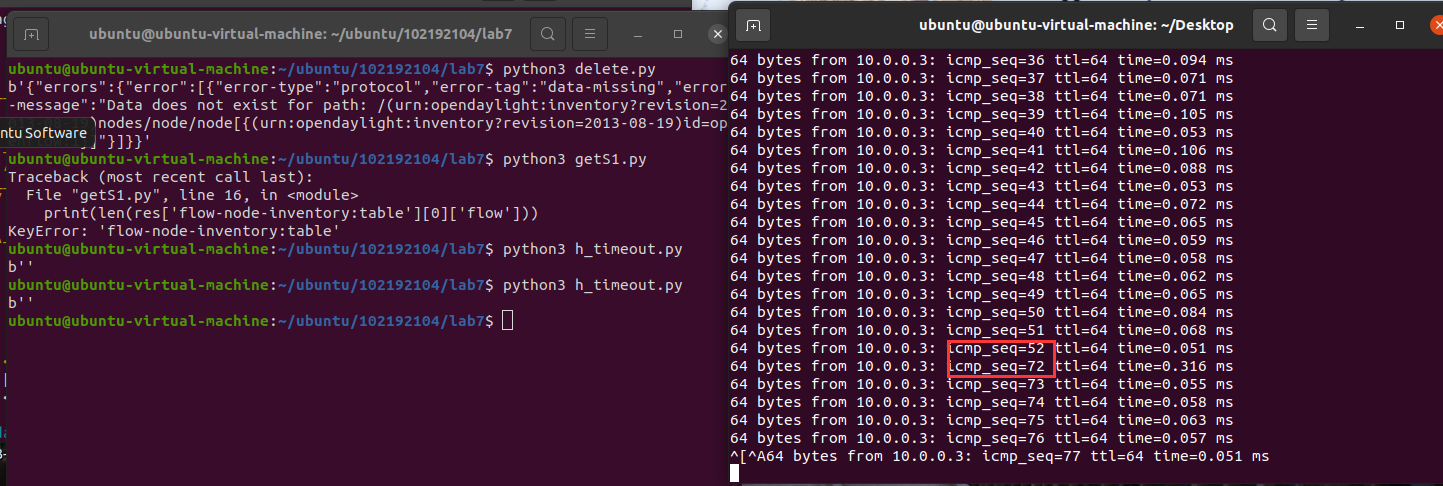
注:delete.py之前已经执行过了,所以报错。
2.Ryu
(1) 编写Python程序,调用Ryu的北向接口,实现上述OpenDaylight实验拓扑上相同的硬超时流表下发。
#!/usr/bin/python
import requests
from requests.auth import HTTPBasicAuth
def http_post(url,jstr):
url= url
headers = {'Content-Type':'application/json'}
resp = requests.post(url,jstr,headers=headers)
return resp
if __name__ == "__main__":
url='http://127.0.0.1:8080/stats/flowentry/add'
with open('ryu_h_timeout.json') as f:
jstr = f.read()
resp = http_post(url,jstr)
print (resp.content)
{
"dpid": 1,
"cookie": 1,
"cookie_mask": 1,
"table_id": 0,
"hard_timeout": 20,
"priority": 65535,
"flags": 1,
"match":{
"in_port":1
},
"actions":[
{
"type":"OUTPUT",
"port": 2
}
]
}
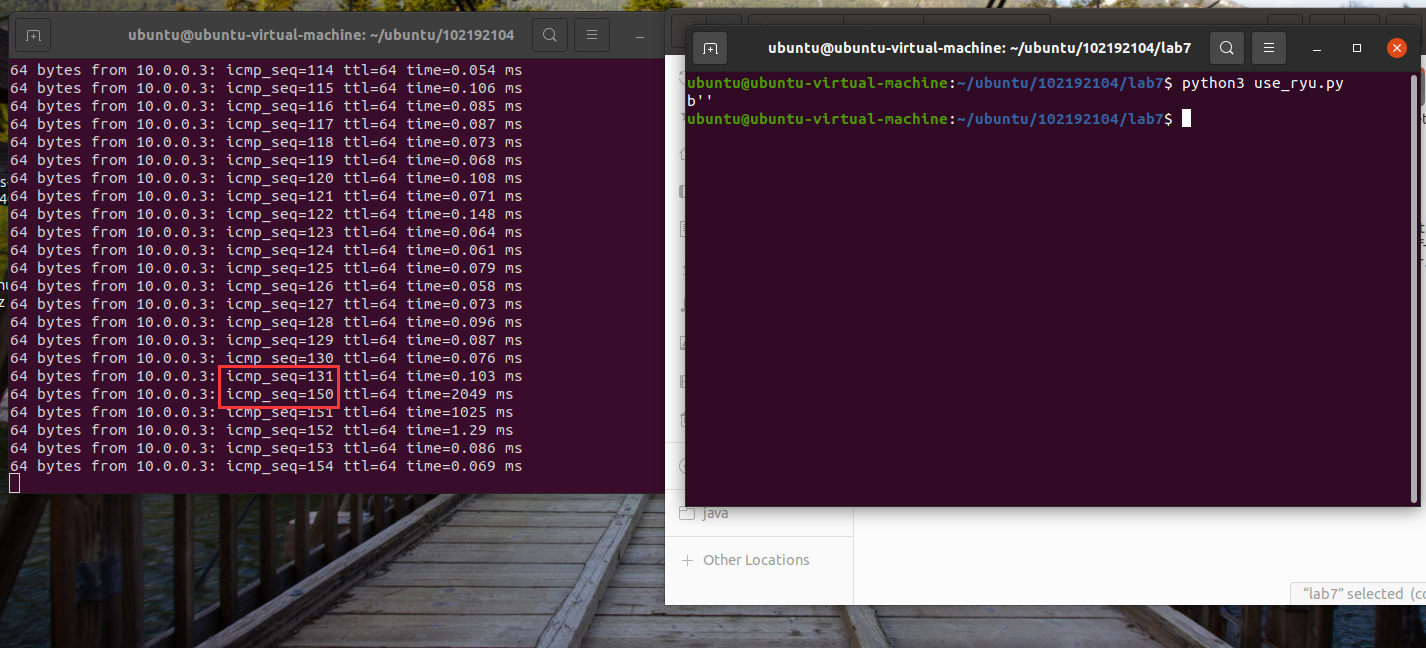
四、个人总结
本次实验倒是没有出现软件方面的问题,就是代码还是不太会改,基本上复制同学的。第二个ryu实验用的系统内置的simple_switch_13.py,
因为需要使用到ofctl_rest.py,所以要注意在ryu下的app文件夹打开终端,避免出现找不到目录的情况。每段代码中最后一段是json文件,因为
之前用postman直接写可视化界面上,一开始我还不知道写文件里。
这次实验操作是使用 python 向指定 url 发送请求来调用 REST API,用代码表示总的来说比之前可视化操作反而看起来清晰很多。



【推荐】国内首个AI IDE,深度理解中文开发场景,立即下载体验Trae
【推荐】编程新体验,更懂你的AI,立即体验豆包MarsCode编程助手
【推荐】抖音旗下AI助手豆包,你的智能百科全书,全免费不限次数
【推荐】轻量又高性能的 SSH 工具 IShell:AI 加持,快人一步
· AI与.NET技术实操系列:向量存储与相似性搜索在 .NET 中的实现
· 基于Microsoft.Extensions.AI核心库实现RAG应用
· Linux系列:如何用heaptrack跟踪.NET程序的非托管内存泄露
· 开发者必知的日志记录最佳实践
· SQL Server 2025 AI相关能力初探
· 震惊!C++程序真的从main开始吗?99%的程序员都答错了
· winform 绘制太阳,地球,月球 运作规律
· 【硬核科普】Trae如何「偷看」你的代码?零基础破解AI编程运行原理
· 超详细:普通电脑也行Windows部署deepseek R1训练数据并当服务器共享给他人
· 上周热点回顾(3.3-3.9)